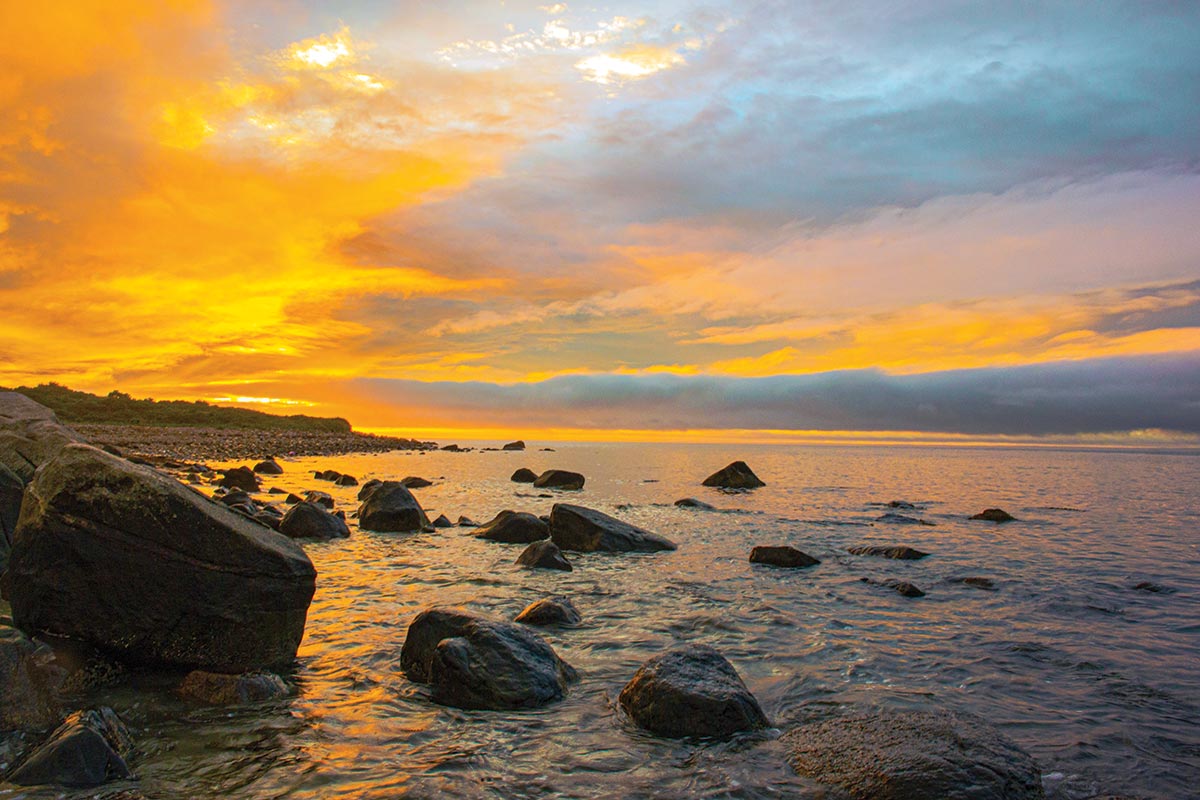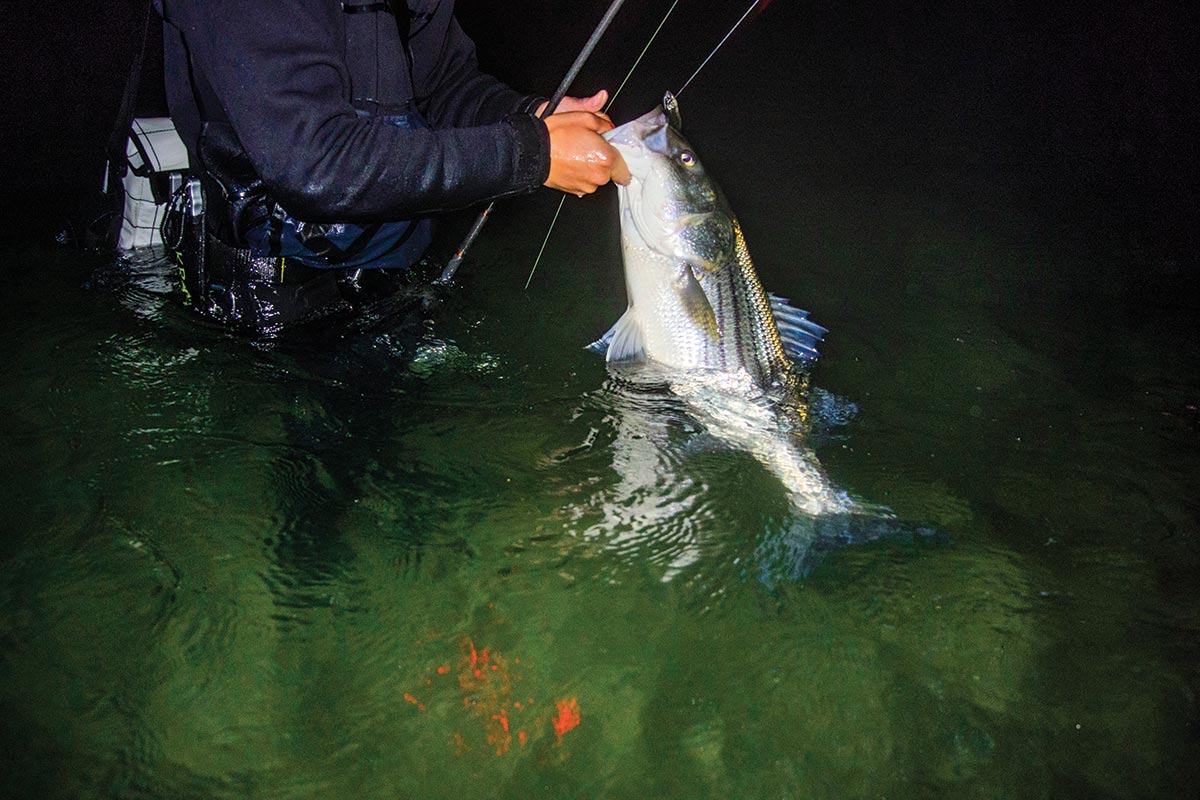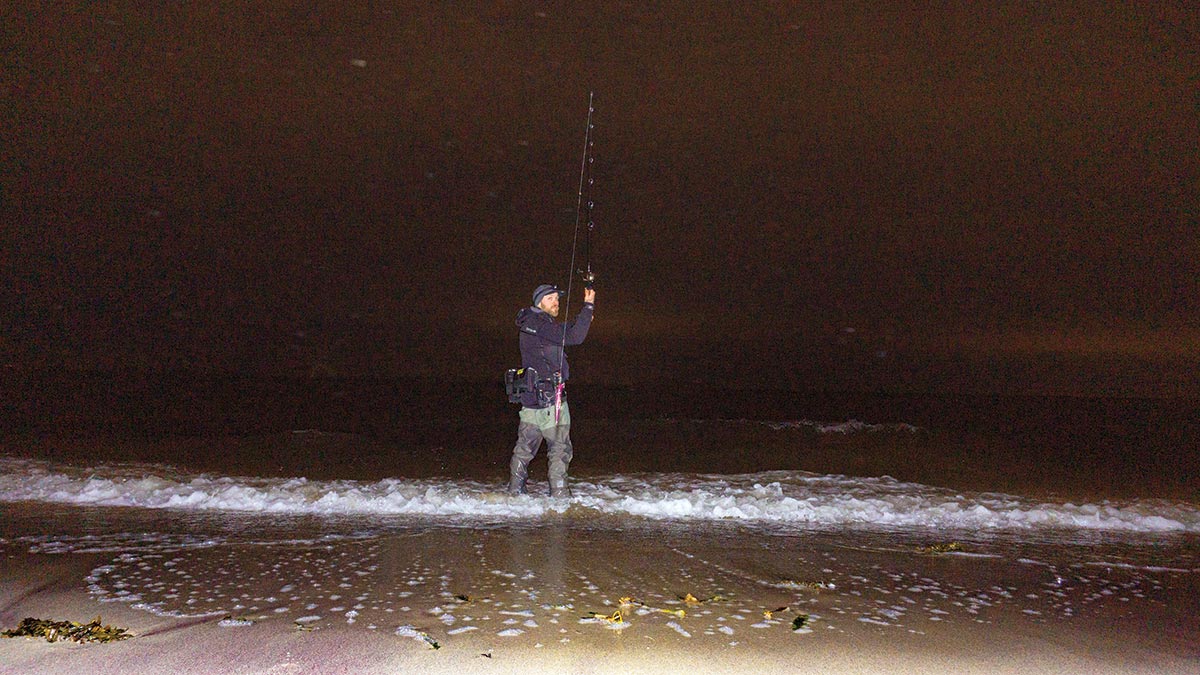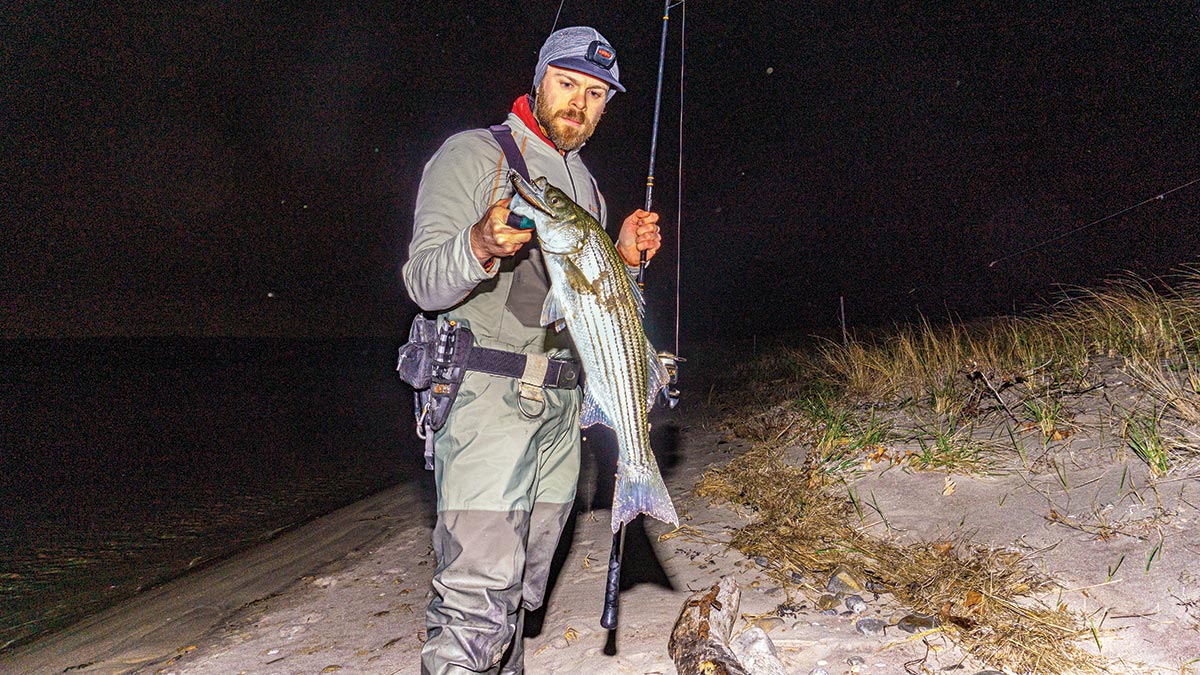
Build a hierarchy of spots in your repertoire to consistently find success in the surf.
Building a productive and consistent portfolio of surf fishing spots is likely the most important component in striped bass success. You can have the best gear and be a highly skilled angler and still not catch fish if your spots are no good. On the flip side, even if you’re just starting out having a solid rotation of fishy areas will ensure success far more than a bagful of the latest-and-greatest plugs.
I travel a lot and fish many different types of shoreline. Some of my spots only produce under hyper-specific conditions over tiny areas, while others tend to offer substantial flexibility and opportunities to roam. I enjoy leveraging those spots that fish under very precise conditions because, while finicky and frustrating, when they pay off it’s usually with a jackpot. However, if given the choice I think it’s far more important to have locations that offer as many options and flexibility within a reasonable walking distance as possible (or driving distance, if that makes sense where you fish). Regardless of your level, being able to bail on one spot and quickly move to an alternate can be a powerful “skunk deterrent” and help ensure reliable catch rates. Therefore, my favorite areas to fish are those that offer back-up options if my primary plans fall flat. That is, I look for surf locations with solid, nearby “Plan-B” options.
Finding a “Plan-B”
One of the best examples of the concept of a plan-B on a large scale is Montauk, NY. While I am certainly no expert on fishing this iconic coastline, I really enjoy it because there are so many different types of structure and small spots within the larger area that there is always potential to find fish. I like Montauk because if my original plan isn’t working out, there is always an alternative waiting for me. That is, I have a plan B, C, D, E, etc. when my primary plan doesn’t work out. In addition, the north side and south side of Montauk generally fish best under completely different conditions, which automatically gives you two large alternate patterns to take advantage of. Adding this factor to the vast array of different types of structure alluded to above leads to a large area that can be fished virtually around the clock and under any condition imaginable.

On a smaller scale, I have a few spots that are comprised of 1/2 to 3 miles of shoreline that contain multiple areas that fish best under a variety of different factors; whether that is different wind directions, alternate tide stages, different bait patterns, or water temperatures. I think of these spots as my own—local and miniature—Montauks because they offer some of the same opportunities, but I can cover them by foot in a single night. These spots are my favorites, because if one area isn’t giving up any fish I can potentially salvage the night with one of the alternatives waiting nearby. Further, the very best of these spots have dramatically different types of structure, because this then offers the widest possible options for fish feeding opportunities.
However, these spots can take a long time to dissect. With so many options, it can feel overwhelming and you can be pulled in too many different directions. Determining which spots are the primary and secondary priorities on any given night can be frustrating; creating a hierarchy of which-spots-to-fish-when over a full season can be even more difficult. To make the most of these varied locations, I urge you to first learn about and understand striped bass and baitfish behavior and general hydrodynamics (which in the context of this article is how water movement creates, interacts with, or influences structure). Then, it simply comes down to hard work and spending time on the water.
That being said, I believe the easiest way to build a robust portfolio and hierarchy of spots in a large area is by first focusing on the most productive piece(s) of structure; what I call the “A spots.” I don’t like attempting to learn too many pieces of structure all at once. Instead, I like to be thorough first with one before moving to the next. To do this, I will first scout a piece of shoreline and examine both satellite maps and nautical charts and come up with what I believe is the most productive area and pattern to fish. I then break this down and focus on it completely for some period of time; anything from a couple moon phases to several years depending on how complicated the spot is, or how confident I am in my progress. Then, once I am at least partially confident that I have leveraged the full potential of this A spot, I will start looking for B and C spots to support my trips to this area. These are spots that could also add value to my night’s fishing, but seem less likely to hold large fish. I attempt to look for B and C spots that fish best under alternative conditions than the A spot. This is true for all factors, but particularly true of tide stage. During the summer, the nights are so short that if all the spots only fish well under one tide stage, it essentially eliminates it from being viable for days on end when that stage doesn’t fall after dark. However, if I can find a couple of spots in the same relatively small area that fish on alternative tides, then I can potentially access the fish in the area every night, regardless of tide stage.

Make no mistake, it will likely take at least several seasons to begin to put together a hierarchy of spots, but I view it is an investment in the future. Having more than one option is an insurance policy against bad wind or weather patterns, and even low fish or bait concentrations. It can take discipline to pull yourself away from a productive area and scout a new one, however as the saying goes: “nothing ventured, nothing gained.” Getting outside your comfort zone and pushing yourself to unlock new areas is an important part of being a successful angler. One huge piece of advice that I can offer from my own mistakes is not going to look for B spots when the fishing is poor. The worst time to look for new potential spots is during periods of relatively decreased productivity like neap tides, warm water temps, low concentrations of bait, etc. Instead, it’s best to try to find spots— A, B, or otherwise—during favorable conditions. A great time to find a B pattern is when you’ve been into fish for a few nights in a row in your A spot. Since you know there are fish in the area, there is a higher chance they could have filtered into these alternatives areas or patterns. In essence, don’t wait until your A spot has stopped producing; this could simply mean that there are no fish in your area.
When writing this article, I kept thinking of one of my spots in particular. My A spot along this piece of shoreline fishes best during the last two hours of the outgoing tide. On the vast majority of nights, this A pattern produces both the largest and the most fish. As a result, I virtually always start at this spot fishing this pattern, and many times I’m content to only fish this A spot and then leave for home when it dies out. However, over the years I’ve found another piece of structure within easy walking distance that can produce for the first few hours of incoming tide. This has worked out very well for me; if my A spot/pattern isn’t working out, especially a couple nights in a row, I can leave in time to arrive at my B spot for the tide switch. This alternative B spot has allowed me to prolong my nights and add some numbers and even a few nice fish to my yearly tallies. While it’s true that the A spot/pattern has produced 40-pound fish and the B spot/pattern has only produced fish into the 20-pound range, it often produces schoolies with greater regularity. Therefore, I call it my “bonus” spot. If I haven’t been into fish for a few nights at the A spot, I’ll head over to the B spot to at least just put a bend in the rod on smaller fish.
When B Becomes A
I encourage you to find solid B spots because they can become A spots on occasion. For example, while your A pattern may be better the majority of trips, if there is a specific wind or bait present it may become secondary to the B or even C patterns. In the example I gave in the last section, I find that the B spot/pattern can actually be more productive than the A spot/pattern in the fall, regardless of tide stage, when there are huge concentrations of smaller baits present at the beach lip. For this reason, I often make a “game time decision” as to whether I fish the A spot for a diminished amount of time before hustling to spot B, or skipping A altogether and just fishing B.
Further, I have another area I fish that has several great pieces of structure, but one of them only fishes well under a southwest wind. While this spot is generally my C or even D spot on most nights, if the wind is blowing out of the southwest at more than 35 knots, it automatically becomes my A spot. On those nights I have found that all the other areas become unproductive.

and ensure reliable catch-rates.
Further, the hierarchy of A, B, and C spots can change from one season to the next. This can be a result of weather patterns, bait concentrations, the integration of moons with the migration of the fish, and other many other factors. This is why it pays to understand your given shoreline intimately, and think about how different areas may fish differently depending on the myriad factors we encounter in the surf. To make sure I’m not missing any of these opportunities, I try to keep large sections of shoreline “honest” throughout the season. For me, this typically means just spending a few minutes casting in any likely area with a couple of my most productive profiles and presentations. I don’t pour myself into it like I would an A spot, but do give it some modest amount of effort. I hate to think of missing an easy bite because I was too lazy to take 10 minutes to cast along any potentially productive shoreline.
The point here is to be flexible and don’t become totally focused on one pattern or spot and have a really solid back-up plan. Particularly now that the fishery is diminished, if fish don’t filter into one of your spots it’s important to be able to track down other opportunities. Being methodical and paying attention to details will help you put together a really solid portfolio, which is often what separates the report-makers from the report-chasers!



